Aero-acoustics test section
Stability Wind Tunnel Acoustic Qualities
The Stability Wind Tunnel was not originally built as an acoustic facility. However, in 1999 detailed measurements of the acoustic characteristics were made. These measurements show the facility to be surprisingly quiet, and to be suitable for aero-acoustic measurements. Further measurements in 2005 showed that an acoustically treated test section with novel Kevlar acoustic windows could provide a viable anechoic arrangement. In 2006 and 2007 a new anechoic system, consisting of this test section and two large anechoic chambers, was constructed and installed. Noise levels in the facility are now as much as 25 dB below those in its initial configuration. Great care was taken during the design and installation of the anechoic upgrades to maintain the great flow qualities of the facility. Just like in the aerodynamic configuration, the maximum flow speed in the anechoic test-section is 80m/s, corresponding to a Reynolds number per meter of 5,000,000.
The anechoic test section is unique requiring no jet catcher. The anechoic system is also removeable enabling the entire facility to be switched between anechoic and aerodynamic configuration to best suit the needs of a test. The general acoustic layout can be seen in Figure 5 below.
This anechoic configuration consists of a new test section fitted with two large Kevlar windows (4.2m long and 1.83m high) associated with two large anechoic chambers. The upper and lower walls have been acoustically treated along the entire length of the test section (7.3m). The treatment consists of foam wedges that eliminate any acoustic reflections at frequencies above 190Hz. The wedges are covered by a from a series of perforated steel sheet panels bonded to a layer of Kevlar cloth that forms a smooth, quiet, but acoustically transparent flow surface. The parts of the side walls that are not covered by the acoustic windows (namely at the test section entrance and exit) have also been treated.
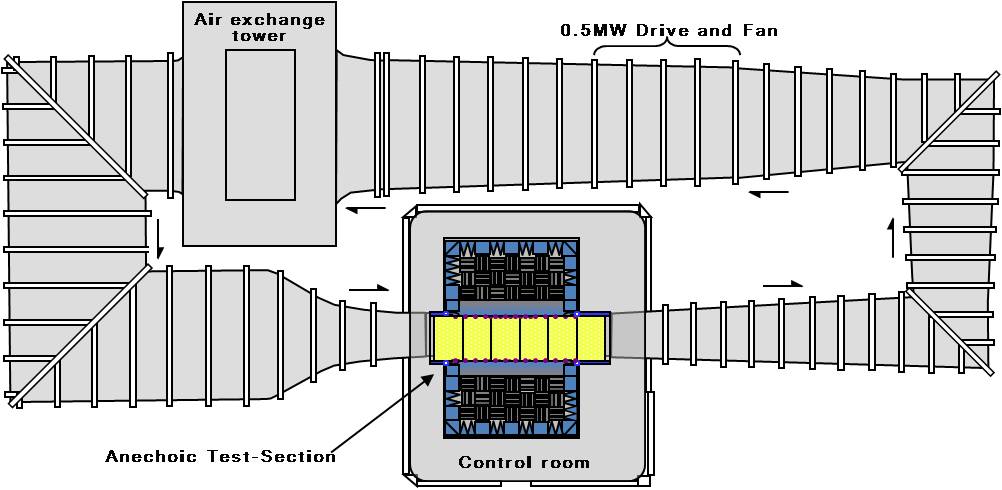
The test section is flanked on either side by two anechoic chambers. Each chamber has a streamwise length of 6m, extends 2.8m out from the test section acoustic window, and has a depth of 4.2m. The chambers walls are constructed from medium density fiberboard, supported by a network of external steel beams, and lined internally with acoustic foam wedges that eliminate acoustic reflections at frequencies above 140Hz. The chambers are designed to fit tightly against the sides of the test section, thus eliminating any flow through the acoustic windows perimeter. Additionally, the walls of the tunnel circuit around the fan and the first and fourth sets of turning vane have been lined with acoustic foam, further decreasing background levels.
Anechoic Test-Section Image Gallery (Click any of the images below to expand):
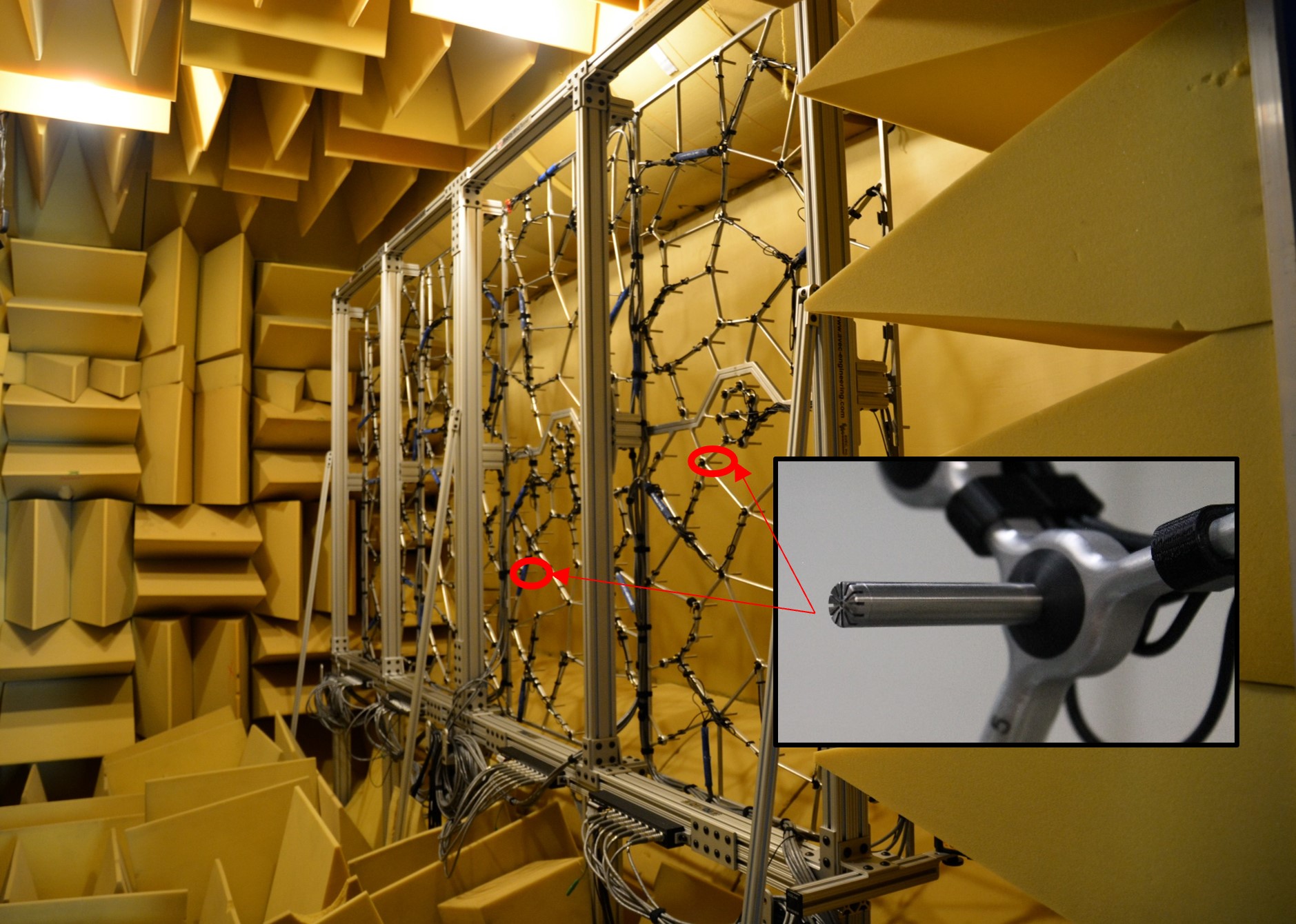
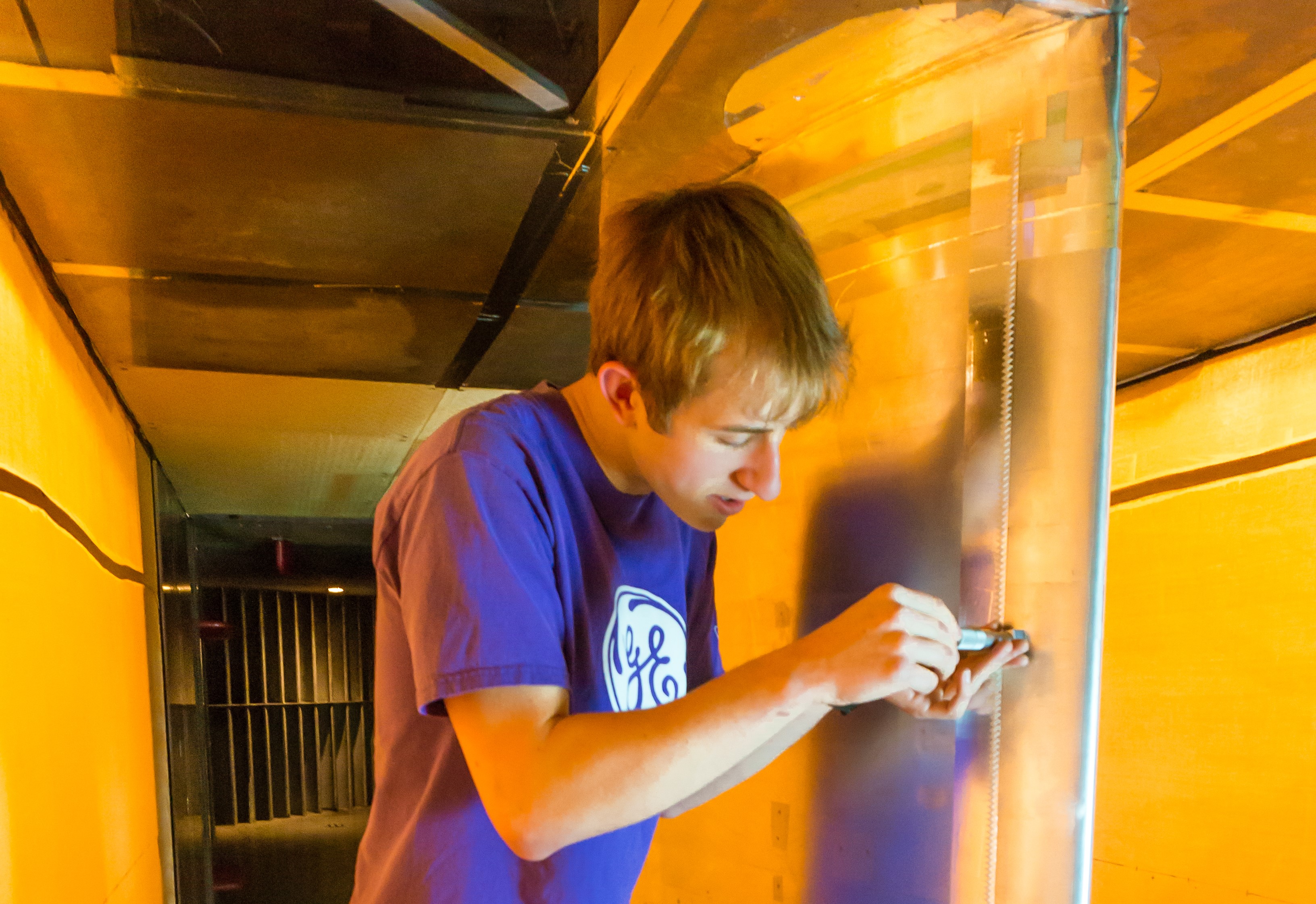
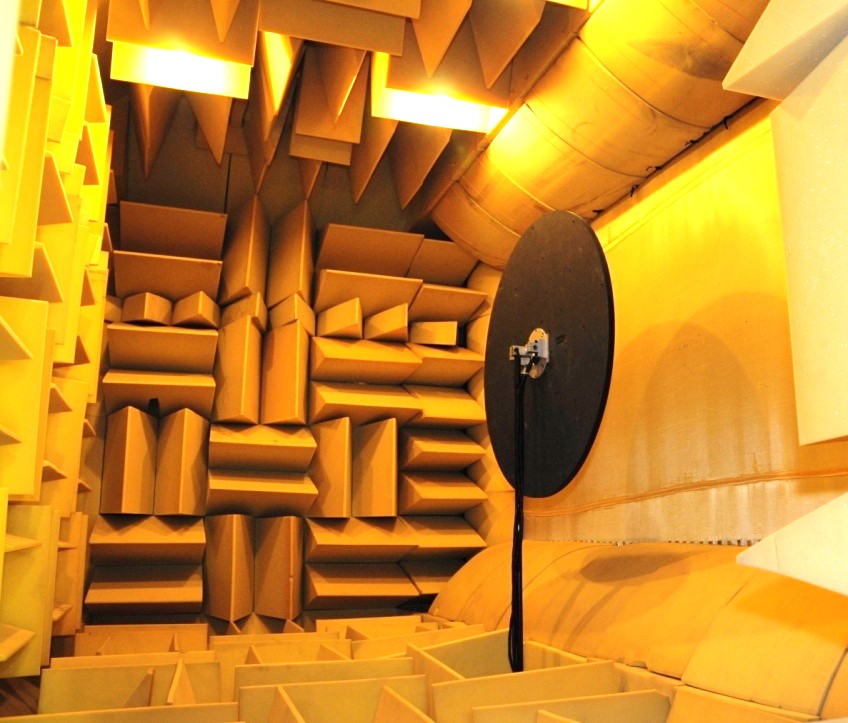
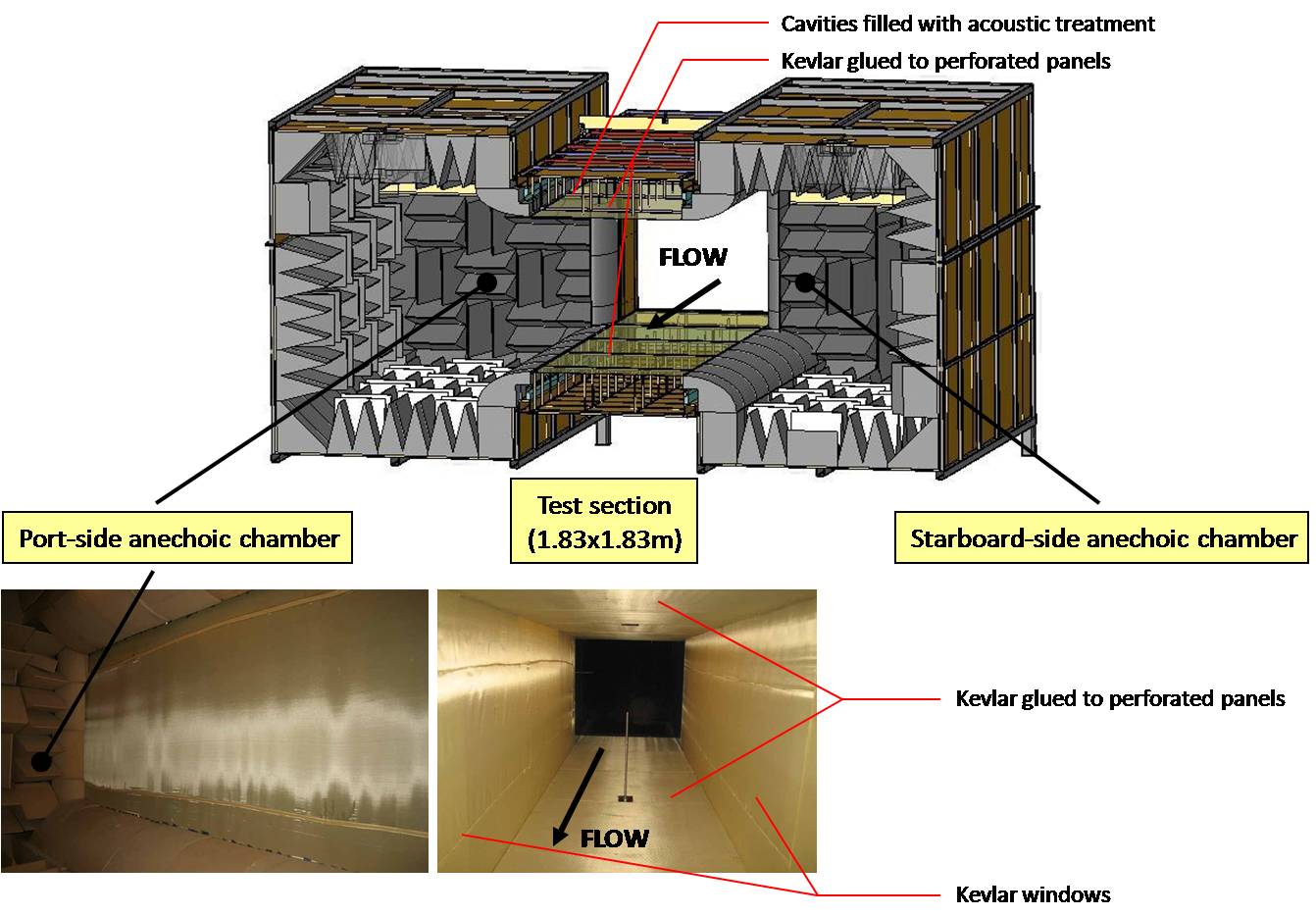
Such acoustically half-open jet configuration limits the sensitivity of the facility to lift interference when arfoils are placed in the test section, thus allowing for larger models to be tested (and consequently larger Reynolds numbers). The current anechoic arrangement further reduced the background noise levels of the facility by 15dB compared to the 2005 configuration. The efforts conducted to lower the acoustic signature of the Stability Wind Tunnel have therefore produced levels that are now as much as 25dB below those of the original configuration. This makes the Stability Wind Tunnel the largest university-owned anechoic wind tunnel in the United States. The anechoic system was also designed to be removable enabling a quick turn-around to switch the entire facility between anechoic and aerodynamic configuration depending on the test requirements.
Publications describing this aspect of the facility include:


